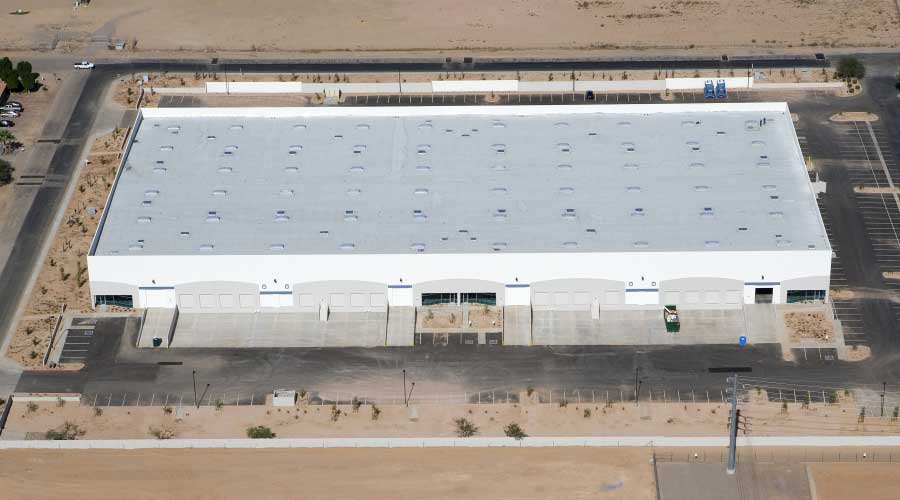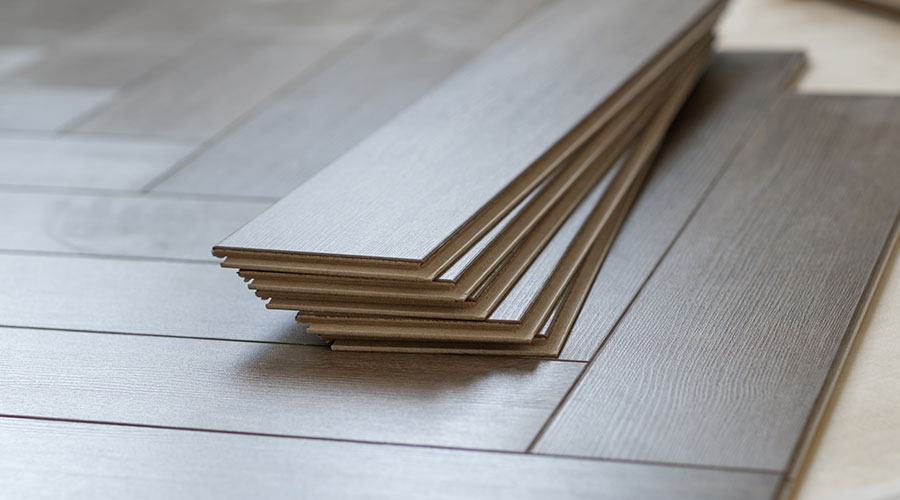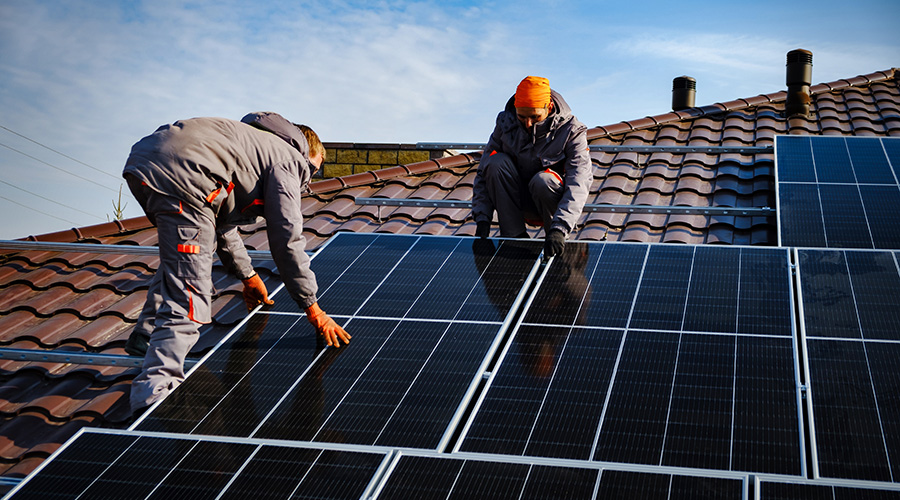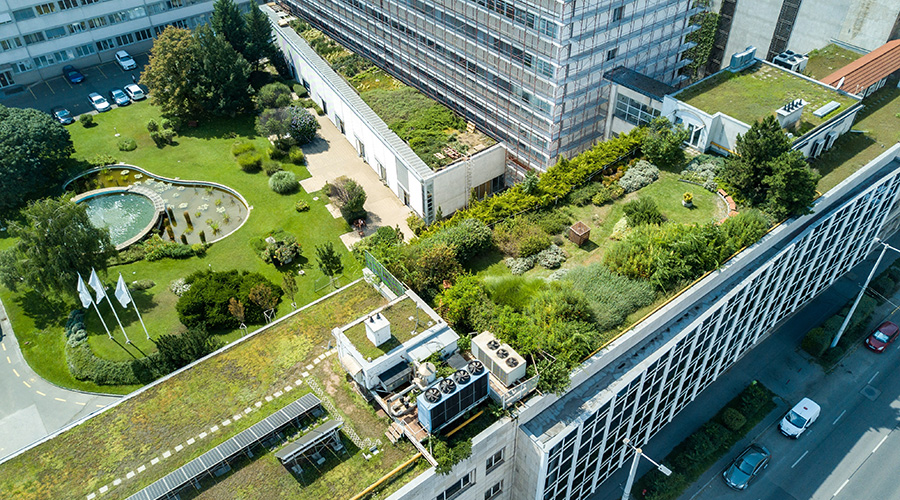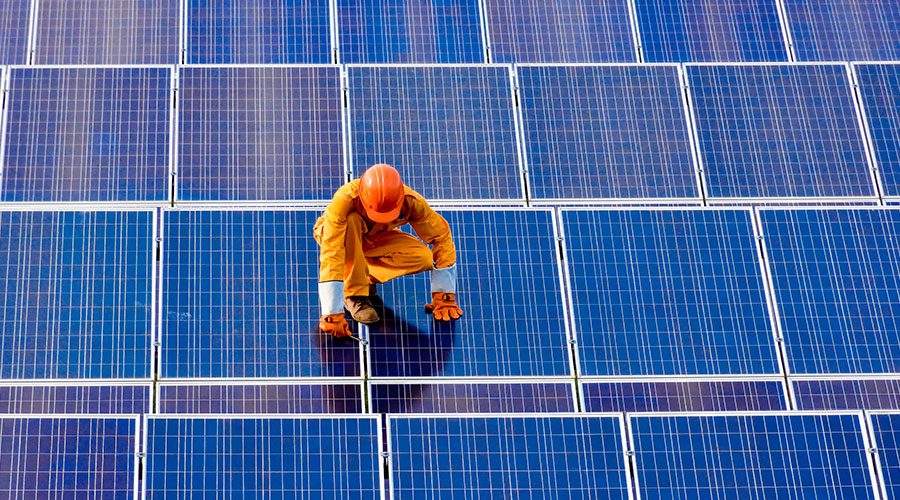Cool Roofing Standards Evolve with The Times
As extreme weather becomes more common, cool roofing offers even more advantages in terms of energy savings and resilience.
By Sarah Schneider, Contributing Writer
Cool roofs were first introduced into building codes and standards more than 20 years ago, around the time the Energy Star Roofing Program was launched to drive market adoption of cool roofing materials. Several of the earlier state codes and national standards offered compliance credits for the installation of cool roofing materials on commercial buildings with low-sloped roofs, such as California (2001) and Florida’s (2001) statewide building standards and ASHRAE 90.1 Standard (1999). In 2001, Chicago paved the way for prescriptive requirements as the first city in the nation to adopt the use of reflective roofing materials. In the following years, many building energy codes, including the International Energy Conservation Code, adopted prescriptive cool roof requirements.
Today, numerous jurisdictions across the U.S. mandate, prescribe, or incentivize cool roofs for new and existing commercial and residential buildings (both steep- and low-slope roofs) as a means of reducing cooling energy savings, reducing peak energy demand, improving local air quality, and mitigating urban heat islands.
In recent years, the federal push to increase the energy efficiency of existing buildings, the adoption of Building Performance Standards at various levels of government, and local implementation of policies and programs to increase climate resilience have aided in greater adoption and promotion of cool roofs across the country. New York City has made significant strides to increase cool roof installations through the NYC CoolRoofs initiative and Local Laws 97 and 94, passed as part of the Climate Mobilization Act (also called NYC’s New Green Deal).
Cool roofs required
In an effort to meet climate and energy goals and to address the growing intensity and frequency of heat waves, many cities, such as Denver, Philadelphia, and Scottsdale, Arizona, require the installation of cool roofs on new and existing buildings.
Some cities also promote cool roofs through voluntary green building programs, income-qualified or affordable housing programs, and financial incentives. For example, Austin, Los Angeles, Louisville, and Orlando offer cool roof rebates, and Boston, New York, and San Antonio deploy programs that install cool roofs on homes and businesses.
The adoption of cool roofs can also be seen at the state level. California currently has the most stringent cool roof requirements in the country, which apply to nonresidential, single family, and multifamily buildings. Other states, like Alabama, Florida, Georgia, Hawaii, and Texas, also prescribe cool roofs. Hawaii is currently considering aligning the state’s low-slope cool roof requirements with California’s building standards.
In many large U.S. cities, more people die from heat waves than hurricanes, tornadoes, flooding, lightning, and blizzards. Extreme heat also causes heat illness and increased respiratory and cardiovascular problems, which can strain health services, as well as disruptions to key infrastructure such as power grids and water supplies.
The negative impacts of extreme heat are intensified by the urban heat island (UHI) effect, a phenomenon in which cities are hotter than surrounding rural and suburban areas. According to the U.S. Environmental Protection Agency (EPA), daytime temperatures in urban areas are about 1-7 degrees Fahrenheit higher than temperatures in outlying areas, with nighttime temperatures about 2-5 degrees higher. This temperature difference occurs because heat from the sun is retained in areas with a high concentration of buildings, parking lots, and roads, and a lack of trees and green space. Tall buildings that block or slow air movement, along with waste heat released by vehicles and air-conditioning units, contribute to the formation of UHIs.
Cool roofs help provide passive cooling during extreme heat events, particularly during power outages and in poorly insulated or unconditioned buildings, and can help mitigate the impacts of the UHI effect. Several federal agencies recognize the usefulness of cool roofs in mitigating UHIs, in addition to reducing building energy use. For example, the EPA provides education about cool roofs as a heat island reduction strategy and the U.S. Department of Housing and Urban Development lists cool roofs as one of six climate resilience strategies. The agency also provides funding to municipalities through Community Development Block Grant funds and for affordable housing projects funded through the HOME Program for the installation of cool roofs.
Green building rating systems also promote cool roofs as heat mitigation strategies. The most notable rating system is Leadership in Energy and Environmental Design (LEED), which offers up to 2 points for the installation of a cool roof under the Sustainable Sites Credit for heat island reduction. The credit is the highest performing of all of the LEED Sustainable Sites credits.
The LEED heat island reduction credit is also synergistic with the SITES Rating System. A construction project could achieve points through both rating systems for the installation of a cool roof material that meets the specified minimum Solar Reflectance Index (SRI) value.
Points are also awarded for cool roof installations through Green Globes, an online assessment protocol and rating system for the design, operation, and management of commercial buildings. Up to six points are awarded for the installation of a cool roof that meets the specified minimum SRI value.
To help cities and urban planners identify what areas would benefit most from cool roofs, Google announced plans to release an extreme heat tool that maps out the solar reflectivity of cities.
During the day, a cool roof highly reflects sunlight (solar radiation) away from the roof’s surface, which reduces building solar heat gain, while releasing any absorbed heat at night. As the name suggests, the surface temperature of the roof is cooler than a less reflective or darker roof. A cool roof helps lower the demand for air conditioning, decrease peak electrical demand, and improve occupant comfort. Collectively, cool roofs improve outdoor air quality by slowing the formation of ground-level ozone.
Cool roofs are available in a variety of product types. Historically, low-sloped roofs were transformed into cool roofs by coating them white. Today, there are "cool color" products on the market that use infrared reflective (IR) pigments. The photo below shows a comparison of the measured reflectance values of “cool” colors (top row) against colors without IR pigments (bottom row). The “R” stands for reflectance, which is measured on a scale of 0 to 1 (or 0 – 100 percent reflective). The higher the number, the more reflective the product.
The “coolness” of a roof material is determined by two basic properties: solar reflectance (sometimes called albedo) and thermal emittance. Solar reflectance is the fraction of solar radiation that is reflected away from the roof, while thermal emittance is the relative ability of the roof surface to reradiate any heat that was absorbed. The values of both properties range from 0 to 1.
In addition to those two metrics, the “coolness” of a roof may also be represented by SRI, a calculated value that combines solar reflectance and thermal emittance. SRI values are usually between 0 and 100, with particularly cool materials exceeding 100.
The Cool Roof Rating Council (CRRC) maintains the Rated Roof Products Directory, a free resource that lists roofing products based on radiative performance. The CRRC Directory contains over 3,000 roofing products that have undergone testing, weathering, and rating in accordance with the CRRC’s strict protocols. A CRRC product rating is not a certification, ranking or approval of a product; it describes the radiative performance of the roofing material and includes products that widely range in solar reflectance, thermal emittance, and SRI.
Sarah Schneider is the Deputy Director of the Cool Roof Rating Council (CRRC), a 501(c)(3) nonprofit organization that develops scientifically supported methods for evaluating and labeling the radiative properties of roofing and exterior wall products.
Related Topics:








